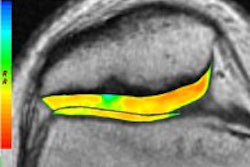VIENNA - Radiology conducted in an emergency room setting is characterized by precise methods that must often be conducted in a very quick timeframe. These contradictory needs -- high speed and high precision -- may produce a stressful environment that can increase the potential for medical errors, according to a presentation Saturday morning at the European Congress of Radiology (ECR).
"In recent periods, increased workload, the greater use of radiology in the emergency room, and shift work requirements due to lack of staff in emergency units have often pushed workers' stress levels to the limit," said Stefano Braico, a radiographer in Trieste, Italy, and a council member of the International Society of Radiographers and Radiological Technologists (ISRRT).
According to Dr. Alexander Yule, secretary general of the ISRRT, risks are always present in the working healthcare environment ,and safety measures must be in place to minimize or eliminate these risks.
"In diagnostic and therapeutic departments, radiographers are in the frontline dealing directly with patients and equipment, and are therefore well-placed to advise on, and implement, preventative processes," he said.
Technologists who choose to work in an ER environment should have the following skill set, according to Braico:
- The ability to manage new and complex situations
- The skill to conduct high-speed patient manipulations as required
- A high level of concentration and control
- The ability to cooperate with the ER staff
- A high situational awareness, good judgment, and personal responsibility
Emergencies, by their nature, are unpredictable and inconvenient; more often than not in medicine, they occur in the late evening or early morning hours when staffing is reduced and personnel are fatigued. These factors can contribute to errors in manipulating the patient for an exam, particularly when there are multiple IV lines and monitor leads connected to a trauma victim undergoing a procedure such as a CT scan, Braico said.
Other possibilities for error introduced by radiologic personnel include failing to follow appropriate procedural checklists, particularly when conducting an MR exam, and the misapplication of contrast media.
Braico advised the formation of an interdisciplinary group to review, identify, and modify safety protocols for ER radiology. He recommended that a study be made of the disposition of space and equipment within the ER radiology suite, and that workflow and workspace be adjusted to accommodate ergonomic efficiency, safety, and departmental workloads. In addition, sharing radiology safety objectives and challenges via an interdisciplinary work group ensures technologists' concerns are addressed throughout the ER department.
In a related subject, Braico said that the ISRRT has requested contrast media manufacturers to distribute their products in user-friendly (nonbreakable), distinctive, and recognizable packaging so that it is not mistaken for other pharmaceutical products by medical staff.
"Small distractions can have serious consequences," he noted.
The combination of clearly defined ER radiology procedure protocols and checklists, an efficient and ergonomic workspace and workflow, and the interaction of ER personnel in radiology safety efforts can decrease the potential for medical errors. Although conducting radiology in an ER environment can be fast-paced and demanding, it must also be patient and safety-focused, Braico said.
By Jonathan S. Batchelor
AuntMinnie.com staff writer
March 5, 2006
Related Reading
X-ray contrast agents rarely fatal, February 28, 2006
USP report blasts radiology medication errors, January 19, 2006
Progress slow in improving patient safety in U.S. hospitals, December 16, 2005
Computerized physician order entry system linked with increased patient mortality, December 7, 2005
Mistakes tied to 2,000+ U.K. deaths last year - report, November 3, 2005
Copyright © 2006 AuntMinnie.com


















